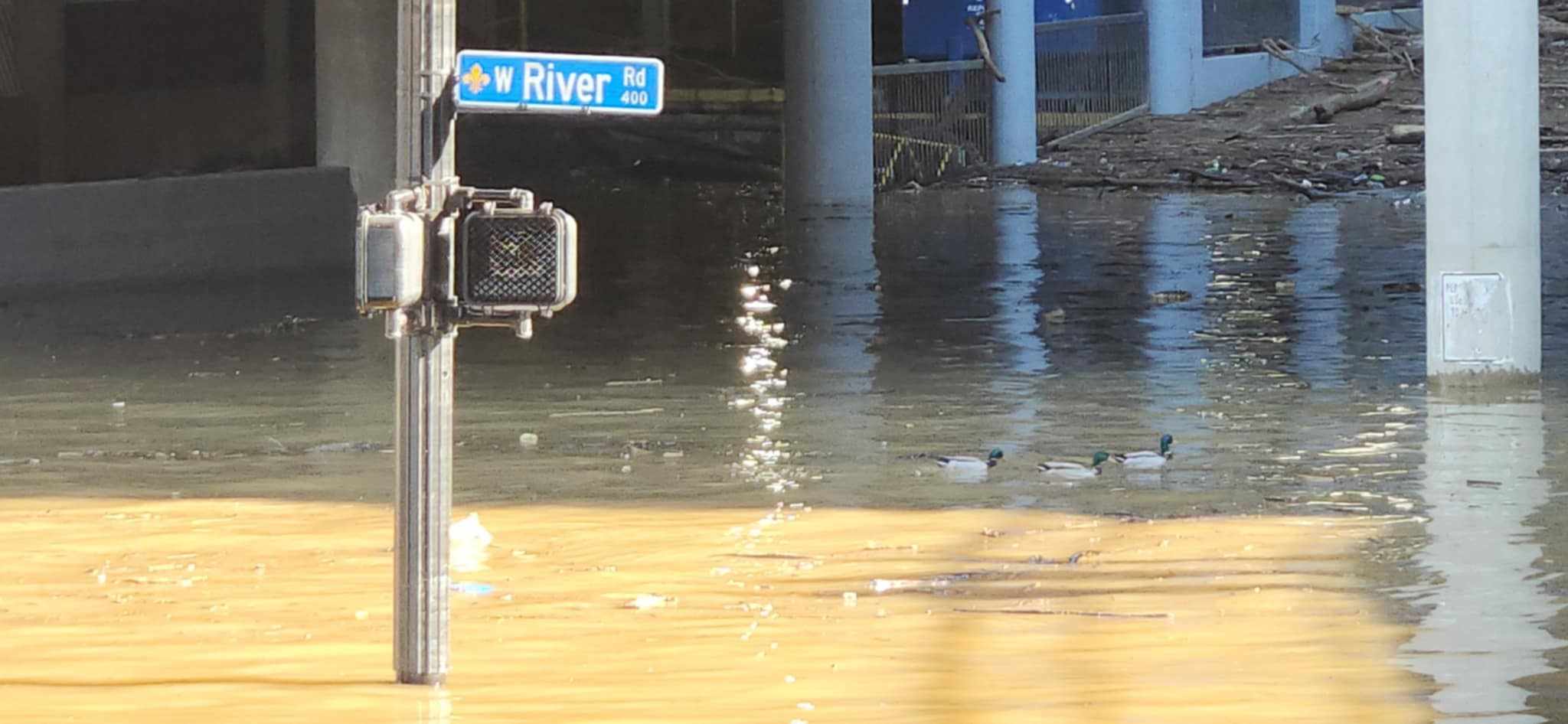Known as “the largest annual fireworks event” in North America, Thunder Over Louisville has been a beloved annual event for the city since it began in 1991, signaling the start of the Derby season. Each year, thousands of Louisvillians gather in places high and low to get the best view of the downtown sky before it lights up in a rainbow of explosions to the tune of various musical hits, new and old.
But this year, Louisville experienced an onslaught of downpours for several days leading up to the Derby kick-off event. River levels reached as high as 37 feet, the eighth largest flood after the Great Flood of 1937, causing River Road to disappear under the water.
It was apparent to city officials that one of the largest money-making events for the city would have to be cancelled, as the flooding would pose a threat to not only fireworks viewers in Waterfront Park, but the workers who haul the equipment onto barges in order to create the colorful display. It is the first time that the event has been cancelled, with diehard Thunder fans typically enduring whatever Kentucky’s erratic climate decides to spring on them the day of the rain-or-shine event.
With changing weather patterns in recent years, however, it’s a surprise something like this hasn’t affected Derby festivities sooner. While it’s difficult to point to any one cause of the extreme storms this April, the frequency of similar weather events has been increasing worldwide as the global ambient temperature of the earth continues to rise, a key factor of climate change.
Cities are largely responsible for harmful CO2 emissions, and Louisville is no exception. It earned failing grades this year from the American Lung Association for its air pollution, while the Ohio River recently ranked as the second most endangered according to the nonprofit American Rivers.
In fact, the signature aftermath of Thunder is a dark cloud of smoke that drifts down the river into the night and over the following days. This year, it’s as though the river took matters into its own hands, flooding the city in a cry of help to the citizens of Louisville to clean up their city – and their acts – before it’s too late. Louisville needs to start seriously prioritizing environmental health in order to prevent further consequences of climate change.
Once the flood receded, Louisville’s riverbanks and streets were left strewn with washed-up trash and sludge. In response, the mayor pushed for an impressive clean-up timeline to ensure the city was in top shape for Derby. But there’s still plenty more to do. Industrial waste from distilleries, coal plants, and factories, such as those found in Louisville’s Rubbertown, is an ongoing cause of river pollution, followed by chemical runoff from lawns and certain agricultural practices, as well as untreated wastewater. The Ohio River Valley’s signature bad air quality isn’t just those springtime allergies, either, but “toxic air” caused by the same industrial polluters, with poorer health among nearby residents.
Industries such as these are major contributors to climate change. Can you imagine a Louisville where the river floods every year, multiple times a year? Where tornado sirens are much more than just a once-a-month annoyance on a Tuesday afternoon?
Well, a 2020 assessment by the Louisville Office of Advanced Planning and Sustainability shows that severe weather events are increasing in Louisville. This year, the flooding caused over $125 million in damages and lost revenue from Thunder, and it doesn’t help that the federal government recently cut Louisville’s funding for efforts such as flood mitigation. Economic strain is only the beginning. As the 2020 assessment shows, worsening weather puts Louisvillians at risk of housing insecurity, inequitable access to resources, and threats to physical health and safety, with underprivileged areas disproportionately affected.
Investing in environmental health is the only way for Louisville to prevent continuous economic blows like those this Spring and to protect residents and the future of the city as much as possible from the consequences of climate change. (So, maybe we shouldn’t celebrate the start of Derby with colorful air pollution? Just a thought…)
